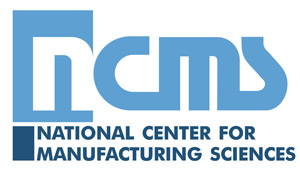Sense & Respond, LAV IV
NCMS Project #: 140438, 140441, 140442, 140443, 140444, 140450, 140453
Problem: The Department of Defense (DoD) spends $100B annually on weapon system maintenance with continuing cost growth due to inflation and new acquisitions. These expanding costs create the need for new practices that increase the overall speed and quality of maintenance actions while integrating improved maintenance, configuration management, and other logistics practices. In addition, given the increased operating tempo resulting from the Global War on Terror and Overseas Contingency Operations, the military services are at a crossroads as they seek efficient opportunities to conduct Reset, Reconstitution and Revitalization (R3). It is anticipated that in FY 10/11 the U.S. Army and Marine Corps will require upwards of $ 10B dollars of additional support to conduct this effort. An intelligent approach to Condition-Based Maintenance is required to effectively employ the scarce resources available to facilitate this one time activity.
There are currently three different approaches to logistics and supply chain management employed in the commercial world and throughout the DoD. Those are mass-based logistics, Just-in-Time logistics, and Sense and Respond logistics. Mass-based logistics is inefficient, expensive and manpower intensive. Just-in-time logistics requires certainty that cannot be attained in the environment of unpredictable, discontinuous change that is the hallmark of military operations. The Sense and Respond model is well suited to the military environment. The key to Sense and Respond is “knowing sooner” in order to adapt to the fluid conditions on the modern battlefield. That is, obtaining pertinent data, transmitting the data to stakeholders; understanding what it means, and acting upon the information obtained.
The Sense and Respond model supports a number of Marine Corps future warfare concepts including Operational Maneuver from the Sea (OMFTS), Seabasing, Distributed Operations, Joint Vision 2010, Sea Power 21, etc. Understanding the challenges associated with this, the Marine Corps has begun to study and field solutions that seek to address the issue. Activities such as conduct of Reliability Centered Maintenance (RCM) analysis, data collection from weapons systems through an Embedded Platform Logistics System (EPLS), modeling and simulation, as well as technologies such as a Portable Maintenance Device (PMD) incorporating an Interactive Electronic Technical Manual (IETM) lay the groundwork for a sensed environment for legacy systems.
The NCMS Sense and Respond II and III projects helped drive requirements and develop technologies for these initiatives. A product of Phase II was the establishment of the LAV Sense and Respond Support System (SRSS). The LAV SRSS has become the Marine Corps’ Center of Excellence for creating a Sense and Respond architecture.
Benefit: Based upon an analysis conducted by AT Kearney, Inc., benefits of this project will include:
- Projected savings in cost of maintenance of $32M per year in the LAV fleet.
- Increase in Light Armored Vehicle availability of 5% which is equal to the equivalent of 40 vehicles (LAV Company +) at no additional cost to the Marine Corps. The cost to replace these vehicles would be ~$60M.
- This project will enable maintainers to accurately and efficiently monitor system health, predict equipment failure, and diagnose malfunctions, request assistance, and order necessary parts on an LAV A2.
- The LAV Depot community will benefit by receiving vehicles for rework using condition based induction.
- The safety and sensor data collected during this effort can be returned to original equipment manufacturers (OEMs) to assist with possible platform design improvements.
The principals and hardware developed and proven during this project will transfer easily and economically to other legacy weapon systems, making the benefits reproducible across the DoD.
Solution/Approach: In the LAV IV project the Sense and Respond team intends to pursue a comprehensive approach to incorporate a variety of new capabilities, leverage the capacities of each against the others, and fully integrate these with existing technologies and processes already in use so that we create a single all inclusive environment in which information is gathered once and used many times. In this environment, bits of data from disparate sources can be combined, sorted and collated in different sets to obtain diverse bundles of knowledge.
A focus of this project will be to examine accurate indicators to induct assets into depot maintenance, so that time and money are not wasted on assets that can be repaired more efficiently in the field, while ensuring that assets requiring depot level maintenance receive it.
Another key focus of this project will be to explore the enormous capabilities that IUID marked items enable. So far the thrust of the IUID effort across DoD has been to mark the parts. In the Sense and Respond environment that has been developed in the previous phases of this project an infrastructure has been built that is uniquely able to capture, use and understand the value of IUID.
Concurrent with this project, PM LAV and Distance Support, Crane will be embarked upon several additional projects that will complement the core CTMA project as well as gaining from the knowledge and experience obtained. These ancillary projects valued at several million dollars including at least two pilot projects, RCM analysis, IUID marking of vehicles and components and more, will produce a symbiotic effect, accelerating the progress of all the efforts in these vital areas of logistics modernization.
Impact on Warfighter: This effort will reduce troubleshooting, diagnosis, and repair times both at the Depot and in the field to improve overall readiness rates.
DOD Participation:
- U.S. Army (TACOM) USMC PM-LAV
- U.S. Navy (NSWC Crane)
- LAV Training Company at School of Infantry West, Camp Pendleton
- U.S. Marine Corps (Albany)
Industry Participation:
- Solidica
- Radian Precision
- Raytheon
- Packer Engineering, Inc.
- Black & Rossi, LLC
- RW Appleton & Company
- Technical Objective Professionals, LLC
- Claxton Logistics
- Dr. Diesel Technologies
- One Network
- Parker Scitech
- Top Line Technologies
- NCMS
